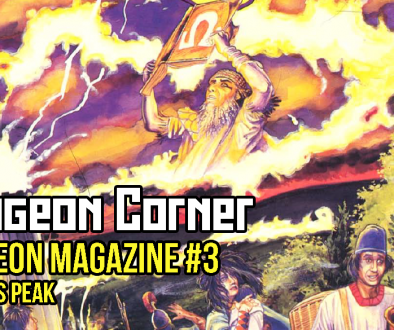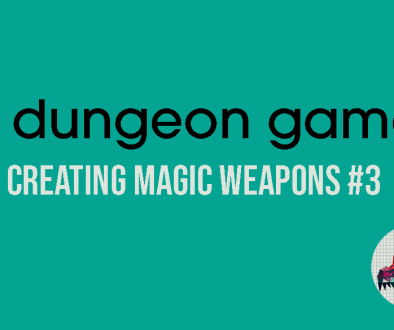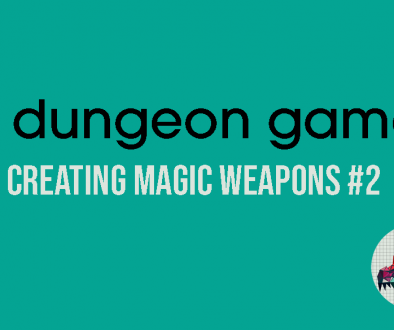Let’s Build A Campaign Setting: Baby Steps
One of the dangers of making this project a weekly commitment was that I’d have a week where I simply didn’t get much done on it, and therefore didn’t have much to write about. This week is one of those weeks. I contemplated simply skipping this post, but I don’t feel good about doing that. I’d rather put up something a little more concise and stick to my schedule than not post anything at all.
What I intended to do this week was to split each level into individual days of adventure and pencil in an idea of what will happen on each of those days. Those days will form the individual adventures that comprise the campaign. Once I have them in place I’ll know what areas of the island I need to detail, and I can start thinking in more detail about how I’m going to handle exploration etc.
I did start doing that – I just didn’t manage to finish it. Here’s what I have so far.

As you can see, there isn’t much more there than we had last week. The first 5 levels are pretty full, which is nice, although I don’t quite know what the secret that is being uncovered will be yet. Note that I haven’t yet made any decisions about things like random encounters or story XP; at the moment, I’m just calculating experience based on a number of combat encounters per day.
The rulebooks indicate that an adventuring day includes about 6 encounters. If you use that as a hard-and-fast rule, though, you’ll soon find that characters gain too much experience too quickly. As Angry GM did with his spreadsheet, I’ve gone through and fiddled around with the numbers until the party end up at roughly the right level at the right time (again, not accounting for things like random encounters and story XP yet).
I’ll fiddle with the number of encounters a lot more in the coming weeks, especially as I start placing story elements and getting down to the business of designing individual encounters. I want to try and balance encounter-heavy days with less intense days, so that the campaign doesn’t turn into a constant battle. At some point I’m going to have to edit this spreadsheet to account for that. At the moment, though, the levelling happens fairly smoothly. The only issue is on the last day of level 5, where the party should hit 6th level ready for the next arc of the campaign. It’s not a huge issue, though – it’s a difference of 100 XP, which can easily be awarded through a story development. (I’ve also just realised that I forgot to edit that 4th day of level 5 when I duplicated it in the spreadsheet – but it’s 7am and I haven’t slept yet, so you’ll have to just forgive that for now).
Although I would have liked to get more detail plugged into this, so that I had a solid idea of what the campaign is going to look like, I’m pretty happy with how the first 5 levels are looking. The party arrive on a boat, having some kind of adventure on route that advanced them to 2nd level. After arriving at the island they make their way to the colony settlement, discovering Turtle Beach (which I’m obviously not going to call it) and doing a few errands that take them to level 3. This will be something straightforward, like helping to clear out some local wildlife that are hindering expansion of the settlement or the gathering of resources or something.
Once they hit 3rd level, the party will begin their mission of exploring the island. They’ll be told about the other colony ship that was wrecked on the reefs to the north east of the island, and be tasked with recovering something from it. As I write this, I realise that this is the perfect opportunity to provide them with the partial map that I’ve talked about; it’s aboard the ship, along with the captain’s logbook and some supplies and things that the colonists need.
While on the wrecked ship they’ll also discover some kind of secret. This could well be marked on the map, and it will lead the party on some kind of adventure that I still haven’t identified yet. I’ll probably take this opportunity to plant some of the seeds that will develop into the later stages of the campaign.
With that mission complete – whatever it is – and the partial map and navigation charts in hand, the party will be tasked with circumnavigating the island in a small fishing boat and attempting to map the coast before heading inland. They’ll come across a few relics from the pre-calamity days of the island, and maybe unearth a dungeon buried on an atoll. I want them to have a bit of an underwater adventure here, just so that they can learn how much underwater adventuring sucks. That will make it much more satisfying when I throw underwater adventures at them later in the campaign and they’re more able to deal with it. It will provide a tangible sense of their own progress, and I think that’s important.
Then, of course, we discover the village of the turtlekin and come to the end of act 1. I realised while putting this chart together that there needs to be some way for the party to communicate with the turtlekin, so I’ve decided that the colonists aren’t the first humans to arrive on the island. Nobody has been here for generations, but there’s one incredibly old turtlekin elder who remembers the last people to come here, and who spent enough time with them to have picked up a little bit of common.
The turtlekin will be facing some kind of threat from a predator or monster on the island, and they’ll enlist the party to help them with it. Things will go well, and then the first reveal happens; the colonists have been eating the young of the turtlekin, and they do not take it well. The party are chased back to their boat and warned never to return, and act 1 comes to an end.
That’s honestly all I managed to get done this week. I’ve linked to Angry GM’s megadungeon posts talking about XP a few times, and I’ve mentioned that I intend to use a lot of the work he’s done. If you’ve read those posts, you’ll recognise that my spreadsheet is very heavily inspired by the one he put together. While I could have edited Angry’s spreadsheets to make mine, I decided to put it together myself – and, unfortunately, I’ve forgotten almost everything I once knew about Excel. Getting that spreadsheet to accurately tell me what level PCs would be based on their cumulative experience took me much, much longer than I care to admit.
Still, it’s progress even if it’s not much progress, and that’s good. Next week I’ll have a lot more to show you.






August 4, 2017 @ 1:53 pm
This is one of my pet peeves especially around D&D 5E published content to date: people level WAY too fast within the game. Regardless of how often you meet and hours of out of game time, I want a character arc that is at least 5 years within the game world from level 1 to level 20 (preferably as much as 8 to 10).
August 4, 2017 @ 4:42 pm
I guess it’s a facet of the way they’re publishing it now. With annual storylines, I suppose the thinking is that they want people to play a campaign over a year and then move on to a new game. The rules for downtime are there to provide for stretching out in-game time so you don’t actually get to 20th level in 30-something days, but you don’t need to be playing for 5 actual years to do it.
I do agree that it seems fast when laid out like this though. One thing that interests me about Pathfinder is the idea of different XP tracks for differently paced games, although in practice most people just use the medium track anyway. Still, this is one reason why I mostly use milestone levelling in my games over awarding XP.